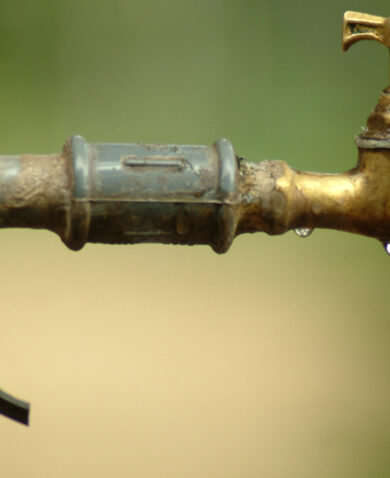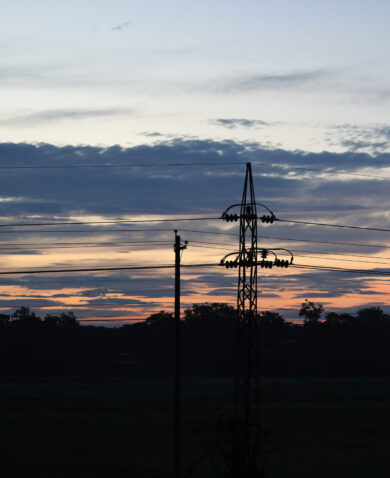
Learning from the Past: 3 Lessons for Future Water Partnerships
August 30, 2018 | 4 Minute ReadBy partnering with the private sector, the global development community can multiply development impact and enhance water service delivery. What lessons can we glean from past public-private partnerships? And how can we apply those lessons to future endeavors to ensure access to clean water and sanitation for all?
Safe and reliable access to water is a fundamental prerequisite for development. Despite gains made in improving water management and increasing access to water around the world, service providers continue to confront technical and financial resource deficits. International donors are increasingly highlighting the investment gap for infrastructure and services as a key impediment to achieving SDG 6 (clean water and sanitation.) As attention shifts to the private sector to help us achieve this goal, it is important for the development community to remember that private sector involvement in provisioning water services is not new. Since the mid-90s, donors have encouraged the public and private sectors to partner to overcome service delivery challenges. Municipalities that heeded those recommendations have seen varying levels of success, which provides a robust set of case studies from around the world. We have a responsibility to capture lessons from these cases to inform future programming.
Public-private partnerships (PPPs), defined as a long-term contract between a private sector actor and a government entity for the provision of a public service, are complex arrangements. Typically, the private entity assumes management responsibility and payment is linked to performance. Proponents of PPPs maintain that private actors bring a level of efficiency and management that governments lack, which can improve the overall quality of services. Private entities are incentivized to comply with regulations and meet performance targets because they are linked to compensation. Private companies can also make large capital investments more quickly than public actors that face difficult political processes. This can especially benefit cities burdened by debt and poor credit worthiness, which limits their access to financial markets.
Nevertheless, PPPs also carry risk. Mitigating these risks requires thoughtful, well-informed design and implementation. Here are some steps we can take to increase their chances of success:
Lesson 1: Take Time to Get the Bidding Process Right
A water PPP can oftentimes be the first of its kind in a municipality, so it is vital to take the time to research, set clear target outcomes, and establish a standard bidding process. An illuminating example of this is the Kigali Bulk Water Supply Project PPP in Rwanda. This PPP, which closed in late 2017, was the first bulk surface water PPP in sub-Saharan Africa. The government of Rwanda announced this planned PPP in 2013, with a timeline of becoming operational within two years. In the end, it took four years of concerted development effort to achieve financial close from the date that bidders were invited to submit proposals, which reflects the diligent care that went into the bidding process. The Kigali PPP is expected to serve as a benchmark template for similar projects across the continent — in large part due to the time that the government of Rwanda and the IFC advisory board invested in preparing the transaction.
Lesson 2: Build in Risk Considerations
Even with a strong foundation and great intentions, external shocks can derail progress in water PPPs. For example, in the 1990s, the government of the Philippines orchestrated a historically large water PPP by entering into two concession agreements with Manila Water Company and Maynilad Water Services, Inc for the eastern and western portions of Manila, respectively. The privatization in the east is considered a resounding success, while the Maynilad-owned side faltered from the start and eventually filed for bankruptcy. Manila Water’s success is attributed to a strong corporate culture of due diligence, a heavy reliance on community-based delivery schemes, and a relatively easier set of conditions in the east. The two concessionaries were required to take on all the public water utility’s debt to international lending agencies. Maynilad received about 80 percent of the total debt, which ballooned during the Asian financial crisis of the late ‘90s. Maynilad’s agreement did not adequately address the risk of foreign currency debt service, which left the company cash-strapped early on and became a key factor in its eventual financial failure. The lesson here is twofold: the risk of currency devaluation should be justly allocated among the PPP entities and PPPs should factor in the possibility of economic shocks and other disruptions into their contractual agreements.
Lesson 3: Establish a Strong Regulatory Framework
The contractual backbones of PPPs can range from a simple management contract, where a private company manages a publicly-owned entity, to a full “Build-Own-Operate” agreement where a private company designs, builds, and operates a facility. The level of private engagement can vary, but in all cases, a PPP should sit within a strong regulatory framework with clear lines of government oversight over the private actors and accountability to the public. The city of Bayonne, New Jersey’s recent experience with a water PPP offers a cautionary tale that highlights the importance of this oversight. Burdened by debt and an inability to make necessary investment into its water system, Bayonne enlisted the Wall Street private equity firm Kohlberg Kravis Roberts (KKR) to manage the town’s water in 2012. When pitching the deal to residents, city council representatives, including the mayor, promised a four-year rate freeze, after an initial 8 percent increase. However, the contractual agreement between the city and KKR allowed rate increases after only two years. Based on a New York Times analysis, water utility rates in Bayonne increased about 28 percent within two years of the deal’s effective date. In addition, Bayonne assured residents that the Municipal Utilities Authority would closely oversee the PPP. However, shortly after the deal was finalized, the city shut down the agency as a cost-saving measure. Citizens have spoken out with concern that their local government is allowing a private company to raise utility rates unchecked, and the incidence of unpaid utility bills has increased.
We think these are just a few of the potential lessons from the available case studies. Further study is needed to support the success of future public-private partnerships, which have the potential to increase global access to water and sanitation services and ultimately unlock stronger development outcomes.
Blog posts on the Chemonics blog represent the views of the authors and do not necessarily represent the views of Chemonics.

















































